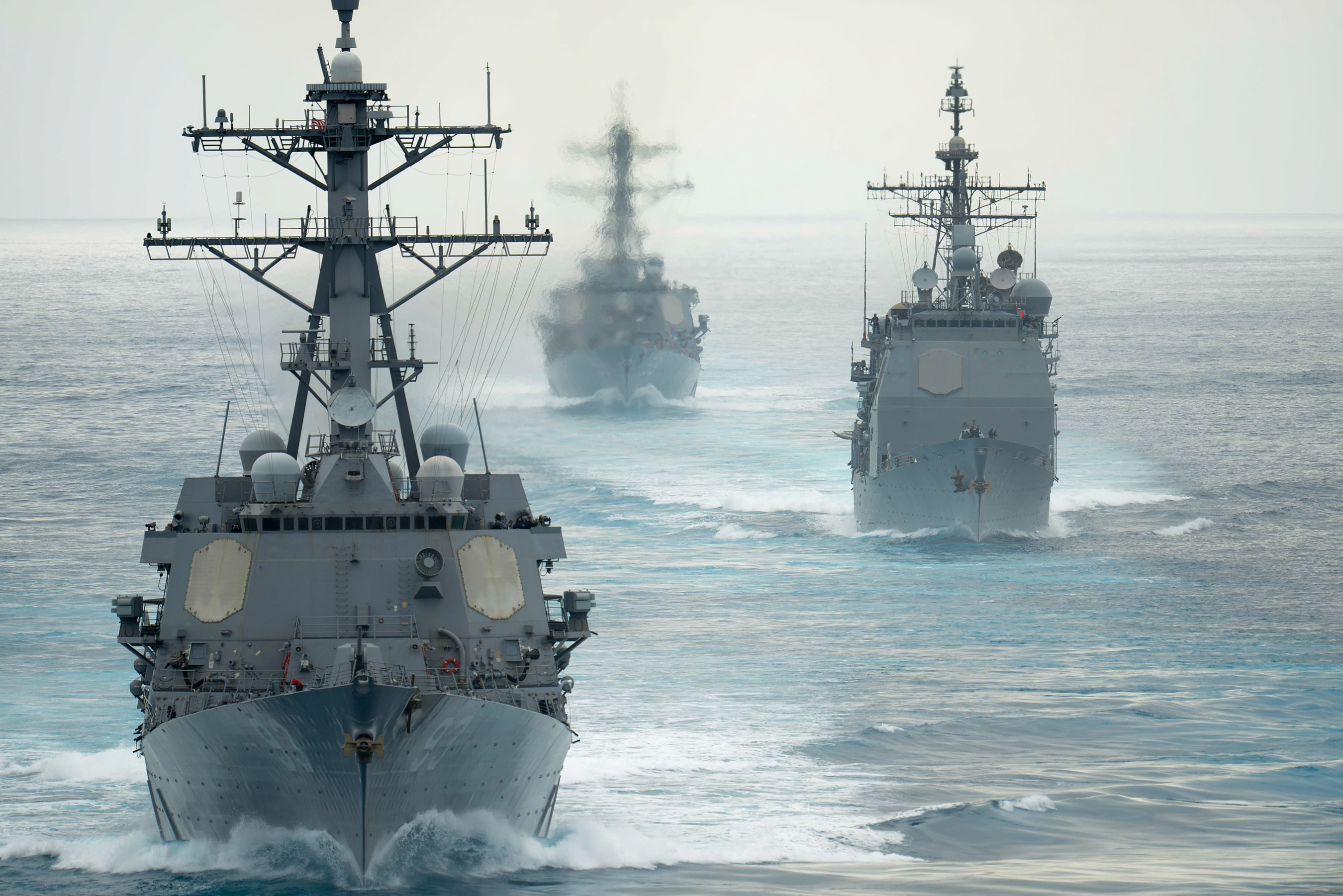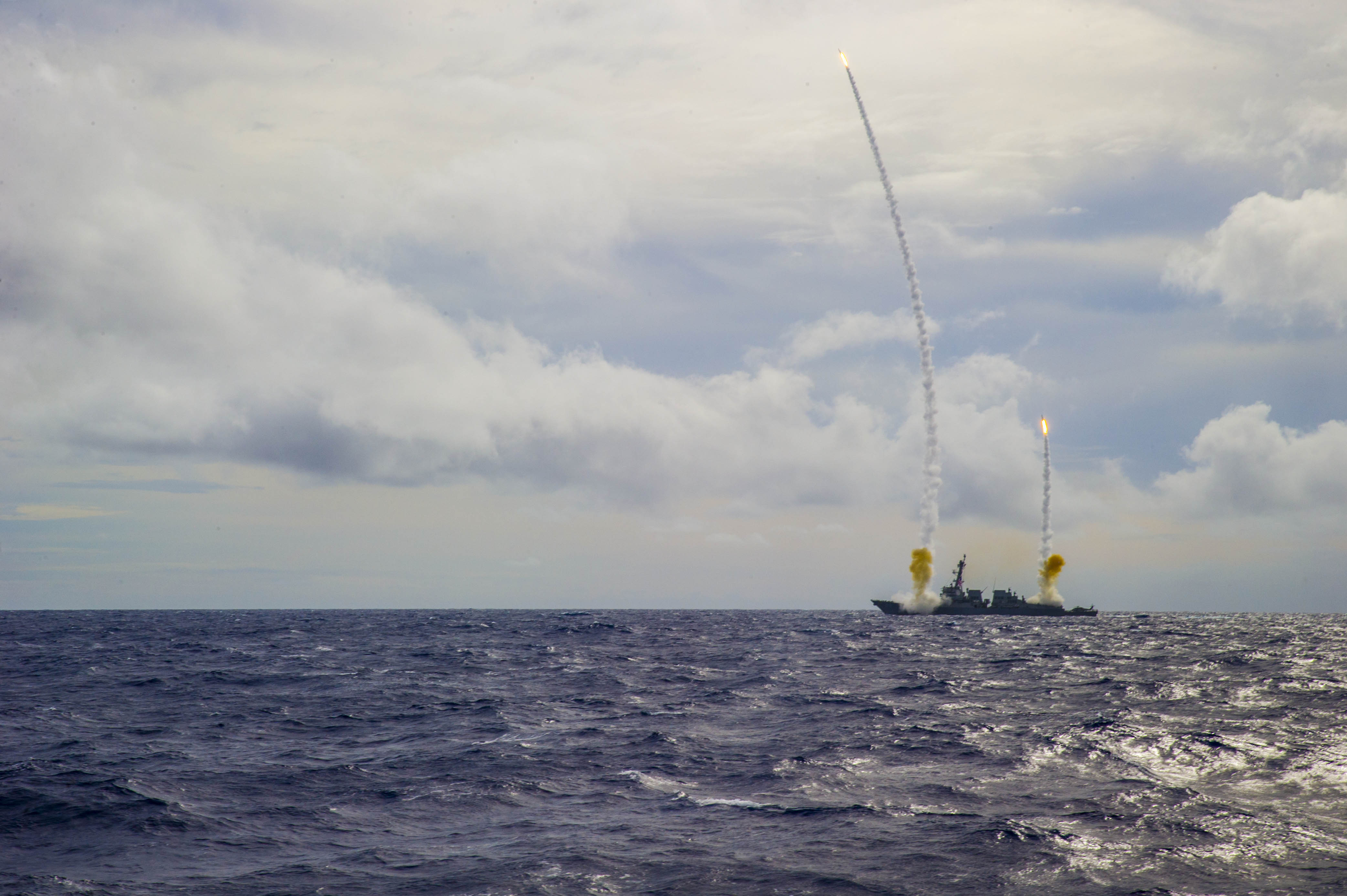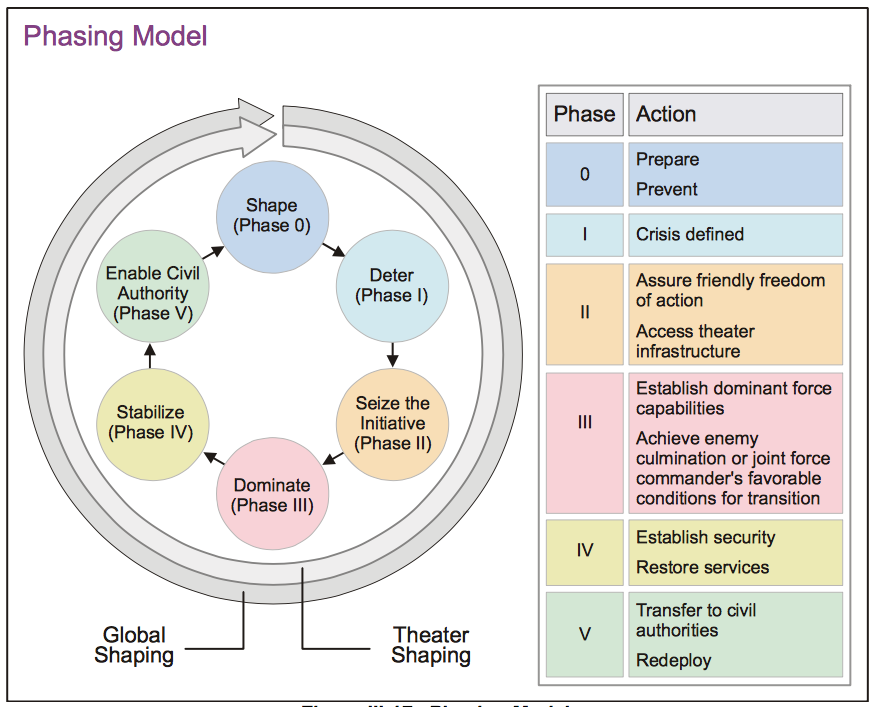
This year, the U.S. Navy’s surface force is busily war-gaming and analyzing its distributed lethality concept in order to fairly evaluate its potential benefits, risks and costs.
In seeking to increase the unit lethality of as many surface ships as is practicable, and then operating them in surface action groups (SAGs) —among other innovative adaptive force packages—more widely dispersed from other concentrations of naval power, the surface force aims to provide combatant commanders with an array of options for Phase 0 and 1 responses against high-end opponents, and options for Phase 3 operations geared toward conflict termination.
Those options, which preserve other elements of the force for other demanding tasks while laying before an adversary numerous operational targeting and surveillance challenges, force that adversary to devote resources to a naval force that is in totality, more powerful, from more attack angles than today’s force.
In addition to complicating an adversary’s operational problem, the imperative for distributed lethality rests on at least three other assumptions.
The first imperative for distributed lethality concerns Phase 0 (shaping)/1 (deterrence) operations, and that is the deterrent value of a more powerful surface force capable of holding more and more diverse adversary targets at risk.
In an approach reminiscent of the conclusion of the 1983 thriller War Games—in which the anthropomorphic computer concedes that the “only way to win is not to play”—deterring conflict with a great power should be considered the one of the most important—if not the most important—goal of conventional naval forces. By arraying more powerful surface forces and operating them as part of a multinational deterrence posture, the opportunity for maintaining conflict at Phase 1 increases, creating decision space for national leadership by delaying or negating the transition to what could be a ruinous war.
Obviously, surface forces would be part of a larger joint deterrence campaign, but as it is, the lethality gaps in the force result in considerably less combat power than could relatively easily be gained by an opportunistic pursuit of the instruments of distributed lethality.
The second imperative follows from the first, and that is, if deterrence fails, forward deployed surface forces must be capable of “fighting their way out” of a demanding anti-access area denial (A2/AD) environment. An element of this imperative is resident in the common refrain of critics that the surface force is not “survivable” in this element, a charge which, while generally fair, ignores the fact that virtually everything else in that element is also not survivable. Additionally, the fact that well-intentioned post-Cold War fleet architectural planning devalued the very weapons and sensors that previously buttressed surface force lethality, offers the path and opportunity to mitigate this vulnerability through additional Surface Force hardening.
Simply put, if conflict with a high-end adversary commenced with little warning, much of the deployed joint force—not just surface forces–would initially be at risk. The mobility of surface forces provides them with a measure of safety and survivability, and it is reasonable to assume that standing toe to toe with an A2/AD adversary in an unattrited information surveillance and reconnaissance (ISR) environment would be unwise. These surface forces would in all likelihood, sortie to areas of less dense weapon and sensor coverage, out of effective range of the opponent’s striking force, there to await the follow-on campaign to reverse the aggression already under way.
Yet if those forward deployed U.S. forces were under active surveillance by the adversary’s fleet at conflict start, their largely unarmed (with effective anti-surface weapons (ASuW)) condition renders them especially vulnerable. Shift ahead ten years from now, to a surface force in which forward deployed combatants (both small and large) field a range of both supersonic and subsonic ASuW missiles capable of targeting opponents out to 1,000 nautical miles, investing that force with the ability to destroy elements of the adversary fleet and valuable land targets while redeploying for follow-on tasking.

The final imperative for Distributed Lethality is the impact that a more lethal and distributed surface force would have on conflict termination. Actual high-end warfare with a peer competitor is likely to be nasty business, and a good bit of that combat—while combatant forces remain generally well matched—will be conducted by the Navy’s submarine force (as part of a joint campaign).
Once the tide has turned and the adversary’s ISR complex is attrited to the point that a broader, combined arms naval campaign can be waged, lethal and dispersed surface forces – along with carrier strike groups—will play a tremendous role in taking the fight to the adversary, enabling joint operational access, tightening the noose of distant blockade, and generally accelerating the prospects for victory. Again—seizing this advantage requires a sea-change in thinking, one in which empowered (by doctrine and capability) commanding officers and crews, given broad mission type orders, exploit opportunities gained earlier in the campaign.
It is essential that defense planners thoroughly evaluate the imperative for distributed lethality and ensure that programs and budget submissions are consonant with these imperatives. Warfighters and planning staffs at the Naval Component Commands need to begin to think differently about how surface forces can and should be employed, and how hardening surface forces can gain valuable time early in a conflict while providing for effective conflict termination later in the fight.





